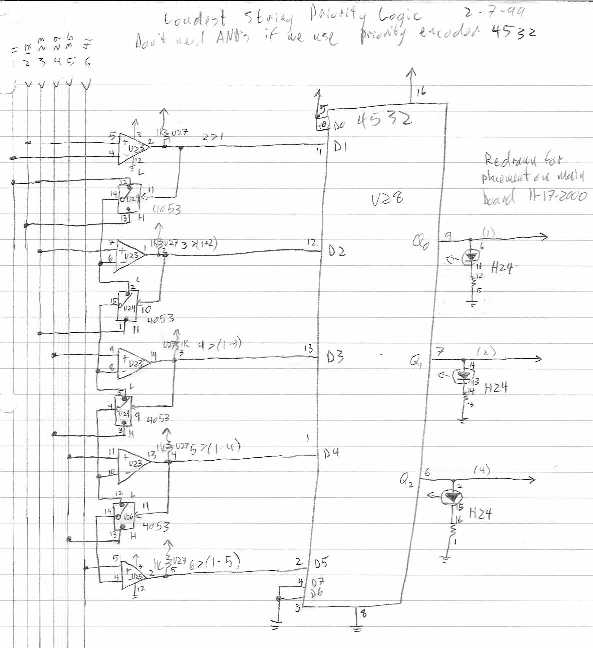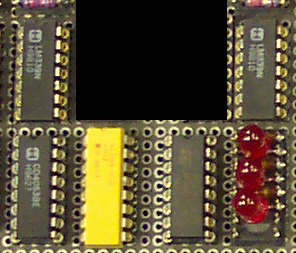| Analog Modifications /\ | ||
|
Check out my YouTube channel. |
This circuit uses comparators, analog switches, and a priority encoder to output a three-digit binary number from 0 to 5 indicating which string is playing the loudest note at that particular moment. The envelope follower outputs for the six strings are compared in a kind of analog bubble-sorting algorithm. The priority encoder input line farthest down on the page which is in a logic "high" state indicates which string is the loudest, then the priority encoder chip turns this into a binary number. The three control line outputs from this circuit are intended to be used to switch control voltages to a monophonic output using analog multiplexers.
This circuit works great as long as you are careful to dampen open strings. If an open string rings loudly while you are playing a melody note on a different string, a loud screeching noise will be heard. This problem is especially noticeable if the GR-300's "compression" switch is turned on. The screeching is caused by the ripple on the outputs of the GR-300's envelope followers and by the fact that these outputs tend to max out at the same voltage for all loud notes. When two ripply voltages of equal value get compared by this circuit, the outputs switch back and forth between two binary values at audio frequency, causing the mono outputs from the analog muxes to do the same. SCREEECH. It might be a useful sound for the experimental composer!I let one of my favorite guitarists, Mike Johnson from Thinking Plague, play this unit in 2001, and he was quite fond of the screeching sound. At some point I intend to try a simpler high-string-priority circuit to eliminate this problem.

Here is the loudest-string-priority circuit wired on the wire-wrap board. The LED's indicate the state of the binary outputs.
